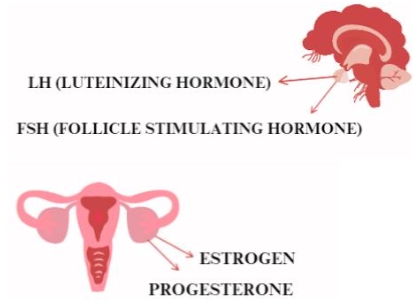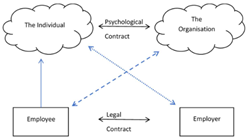Unconventional compensation methods used by patients with bulimia nervosa
Abstract
Bulimia nervosa is an eating disorder that is more common among young girls and women. It bears a lot of life-long consequences for those affected by it, and in the most severe cases, it can be deadly. The aim of the study was to review the literature to help describe unconventional compensation methods used by patients with bulimia nervosa. The following methods were described: excessive and compulsive physical activity, induced vomiting, strict diets, enemas, use of pharmacy products, medication and dietary supplements, diabulimia, and drunkorexia. Atypical compensation methods used by bulimics depend on the resources the patients have at their disposal. Bulimia nervosa is still a significant and complicated health problem, and effective prevention methods have not been developed. Therefore, it is particularly important to observe people at risk of such disorders.
References
[1]Komorowska-Szczepanska W, Hansdorfer-Korzon R, Barna M, et al. Psychiatric bulimia as an interdisciplinary problem. Nutrition and the Environment. 2016; 70-78.
[2]Mosiolek A, Mamczak D. Nutritional behaviors and perception of disease in patients with bulimia: A pilot study. Psychiatry. 2018; 15(4): 206-210.
[3]Kazmierczak N, Niedzielski A. Eating disorders as diseases of civilization of the 21st century. Health Civilization. 2016; 121-131.
[4]Szpytman A, Brukwicka I, Kopanski Z, et al. On bulimia historically and today. Journal of Clinical Healthcare. 2016; (1): 17-20.
[5]Kudła J, Wanot B, Michalski C. Dietary standards and eating and dietary disorders. Diet and Health and Age. 2020; 37-61. doi: 10.16926/daziw.2020.03
[6]Zlotkowska R, Skiba M, Mroczek A, et al. Negative effects of physical activity and sports participation. Psychiatry. 2015; 50(1): 41-46.
[7]Bóna E, Forgács A, Túry F. Potential relationship between juice cleanse diets and eating disorders. A qualitative pilot study. Orvosi Hetilap OH. 2018; 159(28): 1153-1157. doi: 10.1556/650.2018.31090
[8]Hildebrandt M. Forms and types of addictions among the youth. Higher school of vocational education based in Wroclaw. 2023.
[9]Trojanowska A, Zarzycka D, Trojanowska P, et al. Manifestations of anorectic behavior among adolescents. Pediatric Endocrinology. 2017; 16(4): 281-288. doi: 10.18544/ep-01.16.04.1682
[10]Niemczyk-Zając A. Situation of people with mental disorders. WSG Scientific Journals. 2021; 39(6): 223-247.
[11]Maszewska M, Florowska A, Pekul J. Dietary supplements to support weight loss. PRZEMYSŁ SPOŻYWCZY. 2019; 73(04): 5. doi: 10.15199/65.2019.4.3
[12]Bienkiewicz M, Bator E, Bronkowska M. Dietary fiber and its importance in health prevention. Problemy Higieny i Epidemiologii. 2015; 96(1): 57-63.
[13]Coleman SE, Caswell N. Diabetes and eating disorders: an exploration of ‘Diabulimia.’ BMC Psychology. 2020; 8(1). doi: 10.1186/s40359-020-00468-4
[14]Hasken J, Kresl L, Nydegger T, et al. Diabulimia and the Role of School Health Personnel*. Journal of School Health. 2010; 80(10): 465-469. doi: 10.1111/j.1746-1561.2010.00529.x
[15]Torjesen I. Diabulimia: The world’s most dangerous eating disorder. BMJ. 2019; 364: 1982. doi: 10.1136/bmj.l982
[16]Sinha R, O’Malley SS. Alcohol and Eating Disorders: Implications for Alcohol Treatment and Health Services Research. Alcoholism: Clinical and Experimental Research. 2000; 24(8): 1312-1319. doi: 10.1111/j.1530-0277.2000.tb02097.x
[17]Munn-Chernoff MA, Few LR, Matherne CE, et al. Eating disorders in a community-based sample of women with alcohol use disorder and nicotine dependence. Drug and Alcohol Dependence. 2020; 212: 107981. doi: 10.1016/j.drugalcdep.2020.107981
[18]Conason AΗ, Sher L. Alcohol use in adolescents with eating disorders. International Journal of Adolescent Medicine and Health. 2006; 18(1). doi: 10.1515/ijamh.2006.18.1.31
[19]Szynal K, Górski M, Grajek M, et al. Drunkorexia—knowledge review. Psychiatria Polska. 2022; 56(5): 1131-1141. doi: 10.12740/pp/onlinefirst/134748
[20]Witkowska A. Decreased quality of mental health conditioned by eating disorders. Acta Scholae Superioris Medicinae Legnicensis. 2020; 1(23): 8-17.
[21]Callum AM, Lewis LM. Diabulimia among adolescents and young adults with Type 1 diabetes. Clinical Nursing Studies. 2014; 2(4). doi: 10.5430/cns.v2n4p12
Copyright (c) 2023 Martyna Szymanska, Katarzyna Barylska, Łukasz Stefański, Mateusz Grajek

This work is licensed under a Creative Commons Attribution 4.0 International License.









